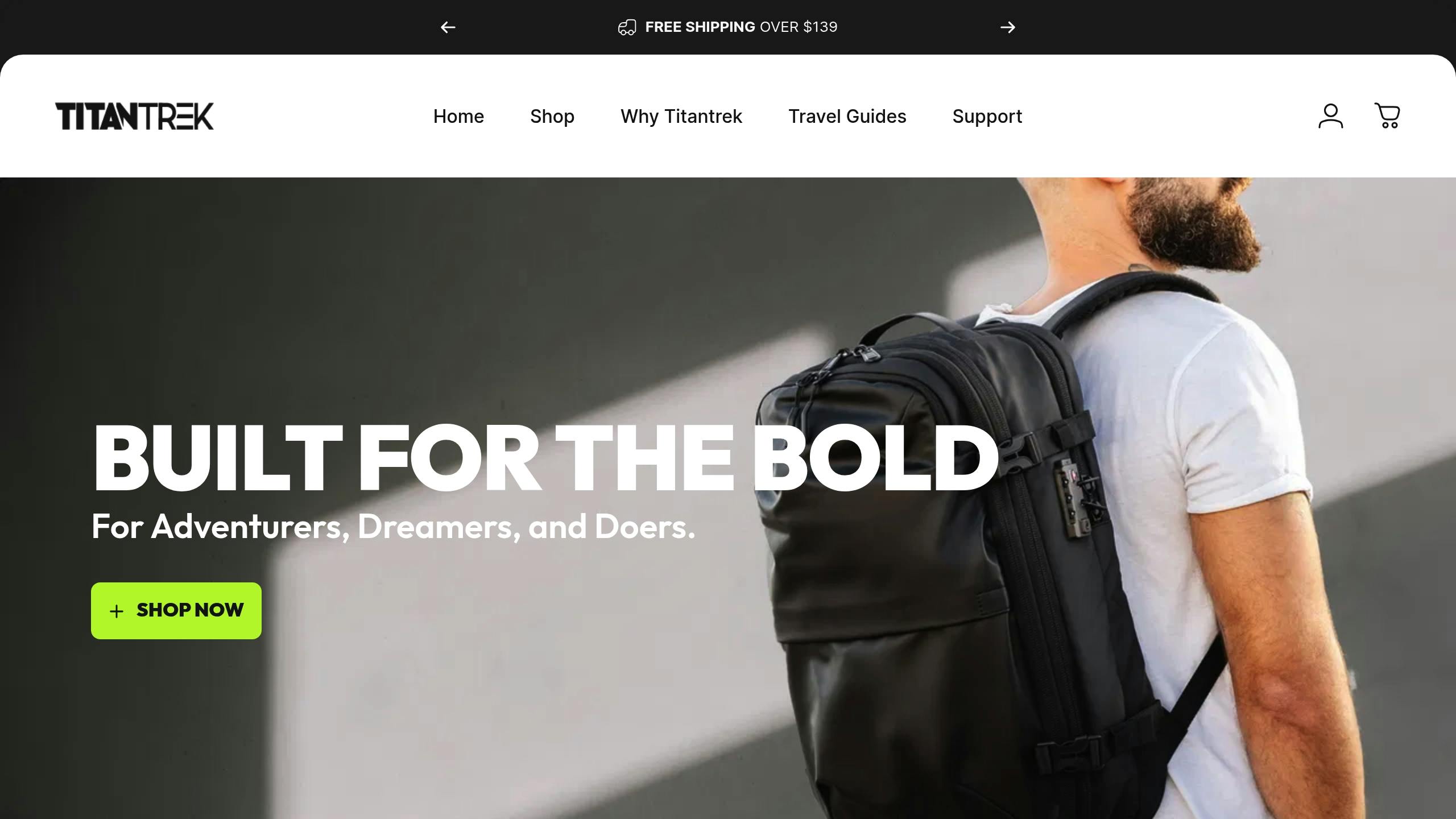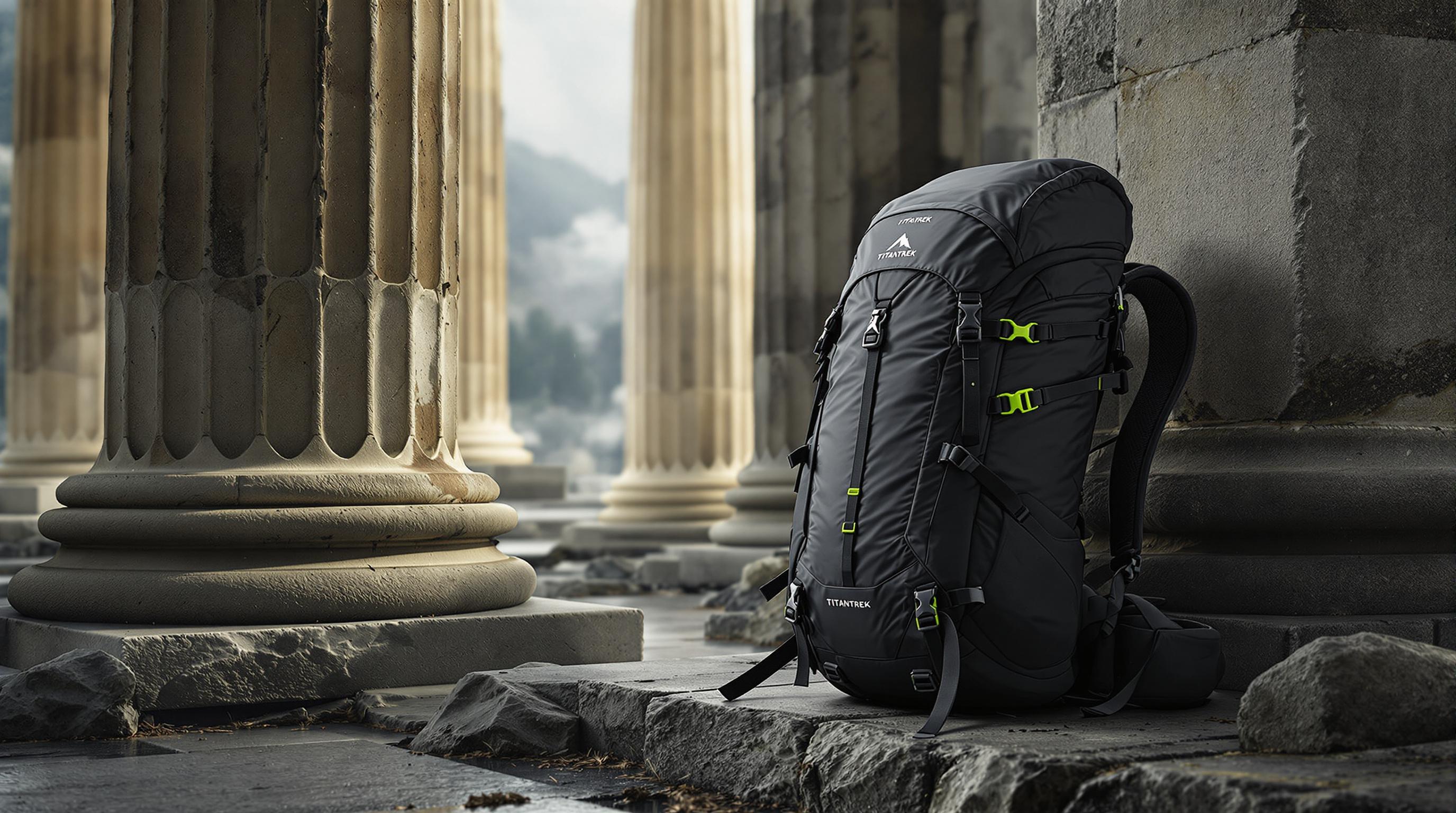Waterproofing outdoor gear is essential to protect your equipment and ensure it performs well in wet conditions. Here's a quick summary to get started:
- Why Waterproofing Matters: Extends gear lifespan, maintains performance, and protects your investment.
-
Common Methods:
- Spray-On: Quick application, ideal for fabrics.
- Wash-In: Long-lasting treatment for clothing.
- Wax: Best for leather and canvas.
-
Key Technologies:
- DWR Coating: Repels water while staying breathable.
- Waterproof Membranes: Blocks water, allows vapor escape.
- Seam Sealing: Prevents leaks at stitching points.
-
Best Practices:
- Clean gear before applying treatments.
- Use waterproof sprays, wash-in products, or wax based on material.
- Reapply treatments regularly (every 3–12 months).
Quick Comparison Table:
| Method | Ideal For | Durability | Ease of Use | Breathability |
|---|---|---|---|---|
| Spray-On | Fabrics, light gear | 3–6 months | High | Excellent |
| Wash-In | Technical wear | 6–12 months | Medium | Very Good |
| Wax-Based | Leather, canvas | 12+ months | Low | Moderate |
Pro Tip: For electronics, use waterproof pouches or cases rated IPX7 or higher. Protect your gear and enjoy your adventures worry-free!
Waterproof Ratings and Standards
Understanding Water Resistance Measurements
The waterproof rating of a fabric is determined by hydrostatic head tests, which measure how much water pressure the material can withstand before it starts leaking. This rating is expressed in millimeters. For instance, a fabric with a 5,000mm rating can handle the pressure of a 16.4-foot column of water. This measurement helps you choose the right gear for various weather conditions and provides a clear way to evaluate waterproofing performance.
Current Waterproofing Technologies
Modern waterproofing goes beyond just ratings, incorporating advanced methods to keep you dry and comfortable:
- DWR (Durable Water Repellent): A coating that causes water to bead up and roll off the surface, preventing the fabric from becoming saturated while maintaining breathability.
- Waterproof Membranes: Thin, microscopic barriers that block water droplets but allow water vapor to escape, keeping you dry without overheating.
- Seam Sealing: A technique that seals the tiny holes left by stitching, ensuring no water seeps through the seams.
A great example of these advancements is Titantrek's vacuum compression backpacks. These products combine these technologies and have received an impressive 4.88 out of 5 rating from 24 reviews, showcasing their effectiveness.
How to Waterproof Different Gear
Waterproofing Clothes and Shoes
To keep clothes and shoes water-resistant, use DWR sprays designed for technical fabrics. These sprays help maintain breathability while repelling water. Apply the spray in a well-ventilated area, ensuring even coverage. Pay special attention to seams and areas that experience the most wear.
For leather boots and shoes, opt for wax-based treatments. These not only protect against water but also condition the leather. Apply the wax in thin, even layers using circular motions, focusing on seams and flex points where water is more likely to seep in.
Protecting Camp Equipment
Even factory-treated gear benefits from regular maintenance. For tents and backpacks without built-in waterproofing, apply two thin coats of a waterproof spray. Let each layer dry completely before applying the next. This method improves water resistance and extends the life of your gear.
Safeguarding Electronics
Electronics are especially vulnerable to water damage, so invest in waterproof cases or pouches rated IPX7 or higher. These provide reliable protection during heavy rain or accidental submersion. Additionally, consider using backpacks with waterproof compartments to store sensitive items like phones, cameras, and chargers. This extra layer of protection ensures your devices stay safe in bad weather.
How to Use Waterproofing Spray for Outdoor Gear
Home Waterproofing Steps
This guide walks you through how to apply waterproofing treatments for your home gear.
Using Sprays and Wash-In Products
Before starting, make sure your gear is clean. Use a technical cleaner like Nikwax Tech Wash or Grangers Performance Wash to remove dirt and old treatments without harming the fabric's performance.
For spray-on treatments:
- Preparation: Hang the gear in a well-ventilated space.
- Application: Spray evenly from about 6 inches away.
- Coverage: Pay extra attention to seams and areas that see a lot of wear.
- Drying: Let it air-dry for 24–48 hours.
For wash-in treatments:
- Use a front-loading washer without adding fabric softener.
- Add about 3 oz of wash-in treatment for each garment.
- Wash on warm (104°F) and include an extra rinse cycle.
- Tumble dry on medium heat for 20 minutes to activate the treatment.
| Treatment Type | Recommended Products | Duration of Protection |
|---|---|---|
| Spray-On | Nikwax TX.Direct | 4–6 months |
| Wash-In | Grangers Performance Repel | 6–8 months |
| Hybrid | ReviveX Durable | 8–10 months |
Wax Application Guide
Waxing is best for canvas and leather items. Popular options include Fjällräven Greenland Wax and Otter Wax Heat-Activated Fabric Dressing.
Steps for waxing:
- Clean and dry the item thoroughly. Work in a dry, well-ventilated area at room temperature.
- Apply wax in small 6x6-inch sections using circular motions. Most items need 2–3 layers for full coverage.
- Use medium heat from a hair dryer, holding it about 6 inches away, for 45–60 seconds per section. Let each layer cool completely before adding the next.
Avoid these common mistakes:
- Applying wax too thickly.
- Skipping the heating step.
- Not giving enough time for the wax to dry.
- Using wax on breathable synthetic materials (it can block airflow).
Reapplication frequency depends on usage:
- Heavy use (weekly outdoor activities): Every 3–4 months.
- Moderate use (monthly outings): Every 6–8 months.
- Light use (occasional use): Once a year.
sbb-itb-b1567d8
Care and Repair
Storage Tips
Keep your waterproof gear clean, dry, and stored in a cool, dark place away from sunlight. Avoid compressing it for long periods, as this can harm the waterproof coatings. Pairing good storage habits with regular cleaning and maintenance helps extend its lifespan.
Waterproofing Product Guide
Choosing the right waterproofing products can make a big difference in maintaining the durability and functionality of your outdoor gear. Here's what you need to know to make an informed choice.
What to Look For
When picking a waterproofing product, material compatibility is key. Each material - whether leather, canvas, or synthetic - requires a specific type of treatment. Always check the product label to ensure it matches your gear.
Breathability is critical for clothing and footwear. Products that block water but still allow moisture to escape help prevent sweat buildup, keeping you comfortable during activities.
The application method also matters. Your choice depends on how much effort you're willing to put in and how long-lasting you want the protection to be:
- Spray-on treatments: Quick and easy to apply but may need more frequent touch-ups.
- Wash-in products: Provide even coverage but require more time and preparation.
- Wax-based solutions: Offer long-lasting protection but need careful, hands-on application.
Product Comparison
| Product Type | Ideal For | Durability | Ease of Use | Breathability |
|---|---|---|---|---|
| Spray-On DWR | Synthetic fabrics, light gear | 3-6 months | High | Excellent |
| Wash-In Treatment | Technical wear, rain jackets | 6-12 months | Medium | Very Good |
| Wax-Based | Canvas, leather | 12+ months | Low | Moderate |
| Silicone-Based | Tents, backpacks | 6-12 months | High | N/A |
Best Products by Gear Type
Different types of gear require specific waterproofing solutions. Here’s how to choose the right product for your needs.
For clothing and outerwear, focus on treatments that maintain the fabric’s breathability. Modern DWR sprays are a great match for synthetic materials, helping them stay water-resistant without compromising moisture-wicking properties.
When it comes to footwear, the material determines the best treatment:
- Leather boots: Wax-based solutions provide durable protection.
- Synthetic hiking shoes: Spray-on waterproofing is ideal for easy application.
- Canvas footwear: Silicone-based treatments create a strong water barrier.
For camping equipment like tents and backpacks, durability is a top priority. Silicone-based products are perfect for these items, offering heavy-duty protection. For example, Titantrek's vacuum compression backpacks have received glowing reviews for their water resistance and thoughtful design.
"Arrived in reasonable time, seems of very good quality of materials, lots of compartments for all eventualities, very well organized, vacuum system works perfectly and the pump is powerful." - Ahmad Harris, January 2025 [1]
Lastly, for electronics, use waterproofing solutions specifically designed for devices. These products shield against water while ensuring buttons, ports, and screens remain fully functional.
Titantrek Waterproof Gear

Titantrek stands out in the world of waterproof travel gear with designs built to keep adventurers prepared for unpredictable weather.
Titantrek Backpack Features
The Atlas Vault Backpack is designed to keep your belongings safe and dry, thanks to its standout features:
- Made with materials that repel water to keep moisture out
- Built-in vacuum compression system to save space without losing waterproofing
- TSA-approved locks and anti-theft pockets for secure travel
With an impressive 4.88/5 rating from 24 reviews [1], this backpack has earned the trust of travelers.
Travel Benefits
Here’s how these features make your travels easier:
| Feature | Benefit |
|---|---|
| Vacuum Compression | Saves space while staying waterproof |
| 17" Laptop Compartment | Keeps your electronics safe and secure |
| Carry-on Compatible | Meets airline size limits with water protection |
| Multiple Compartments | Helps you stay organized on the go |
Shop Titantrek Backpacks

The Atlas Vault Backpack is available in two options:
- Complete package with pump – $149.00
- Backpack only – $139.00
Both options come with free shipping on orders over $139.00 and a 30-day return policy, giving you the chance to test its waterproof design without worry.
Summary
Main Points
Keeping waterproof gear in top shape requires a well-thought-out approach to selection and upkeep. Durable waterproof gear showcases how advanced materials and designs perform effectively in everyday situations.
Here are some key tips for maintaining your waterproof gear:
| Aspect | What to Do | How Often |
|---|---|---|
| Regular Inspection | Look over seams and coating for damage | Monthly |
| Treatment | Use suitable waterproofing products | Every 3–6 months |
| Storage | Store in a dry, cool environment | Always |
| Cleaning | Clean off dirt and debris | After each use |
Next Steps
Put these tips into action with the following steps:
- Inspect your current gear for any signs of damage or leaks.
- Invest in high-quality products with reliable waterproof ratings and strong user feedback.
- Set up a consistent schedule for inspections and waterproof treatments.
- If you're a traveler, ensure your gear meets proven waterproof standards.

Ergonomic Testing for Vacuum Compression Backpacks
Vacuum Compression vs. Traditional Backpacks: Key Differences